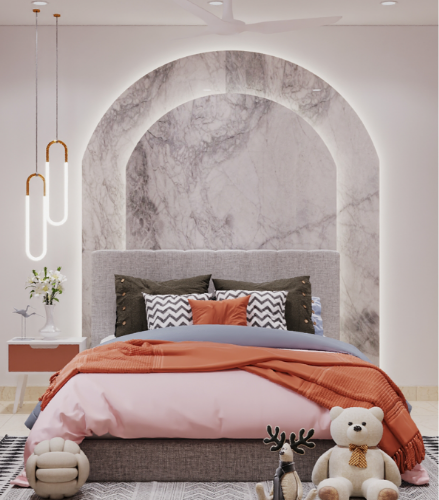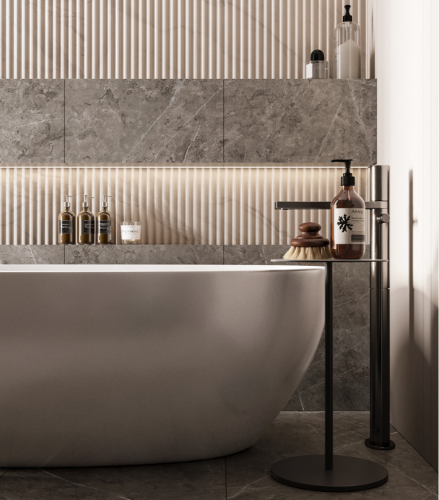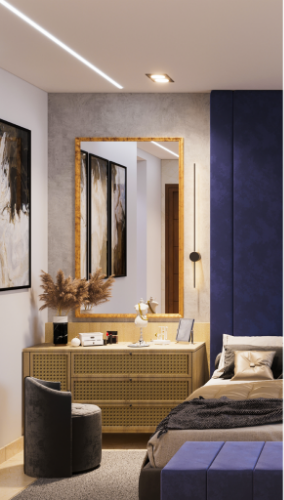Chairs for home : The earliest evidence of chairs as household furniture can be traced back to the Egyptians, Greeks and Romans, subsequently popularized in Europe and the rest of the world through trade and travel. More importantly, chairs have been a constant element of daily life which has evolved alongside humans throughout the decades to meet their needs.
This has come to a point where some modern-day chairs are so at odds with the ones from the past that they are unrecognisable from each other. Nevertheless, the re-emergence of designs and styles from the past has introduced a variety of chairs on the market today. However, people are unfamiliar with the number of choices, so we have put together this list of different types of chairs to help you decide which one is best for your home.
| Note: Before starting this list, we decided against including the most commonly used chairs, as you might already be acquainted with the design and style of these types of chairs. We also opted against including other less popular types of chairs to keep the list as short and informative as possible. In case you like any of these chairs and are unable to find them in the market, feel free to get in touch with us. |
Now let us see the 10 types chairs..
1. Wingback Chairs

Many admire the design of this unique chair, but a lot less know the actual need for such a design. This chair was first introduced in England during the 1600s and the core design of the chair has remained the same ever since. However, the same can not be said about the materials used on it. Originally, these chairs had an exposed wooden frame with padded cushions on the seat and in some cases on the armrests as well. But today, almost the entire chair is covered with upholstery and synthetic feathers for cushioning. Coming back to the design, its unique wings on the back has and were built for a very specific purpose.
The thing is, British homes in the 1600s were not great at climate control, so a drop in temperature caused people to hide under thick blankets. And this is the inconvenience these chairs were built to mitigate. Usually placed near the primary heating source, fireplace, the wings of the chair trap heat in the area while also protecting the occupant of the chair from drafts of wind. The wings on Wingback chairs today serve no such purpose but are only present for the sake of the design. There are several types of wingback chairs, yet the two standard designs popular today are the flat wing and the scroll wing. Moreover, the chair first re-emerged in the 1700s and made its way into the modern-day home. During this time, the chair went through a series of changes and modifications, one of the most noticeable changes are the ones in materials.

Also Read: The Impact of Furniture Layout on Interior Design
2. Club Chair

Originating out of France in the 20th century, it’s a type of armchair known for its unique leather exterior and curved edges. The chair has also long been a classic feature of French interior décor and is best defined by its characteristics such as the design, carpentry, fellmongery, upholstery and colouring. Moreover, the introduction of this chair came along with a new padding technique where the coir filling is complemented by conical springs.
The name of the chair may suggest it first appeared in a club, but it’s not that simple. While some reports suggest, the name is a reference to a gentleman’s club, it should be taken with a pinch of salt. However, we are sure about what it was called before the term “club chair” came along. Before “club chair”, it was known as fauteuil confortable, French for a comfortable chair. The chair also has various iterations that are named after the shape of the chair.
Also Read: What’s Trending in Furniture: Shapes, Fabrics & Materials 2023
3. Windsor Chair
The Windsor chair, also known as the Welsh stick chair, has one of the most speculative origins. No one is quite sure where it came from, what we do know is its name is derived from the market town of Windsor Berkshire. It’s also believed that the chair made its first appearance in the county of Buckinghamshire. However, it’s not clear when, according to some sources it was around the 16th century, but this time period is wrong according to other sources.
Regardless of when and where it first appeared, the chair is considered to have one of the best traditional designs. In particular, the pole lathe legs drilled into the wooden disk-shaped seat. Even the backrest is expertly crafted and put together using wooden fittings. Moreover, the chair is made of wood with a polished look. While we are discussing the look, it’s important to point out that it will be a great addition to a traditional-minimalist home.

Also Read: 8 Coffee Table Design Ideas For Every Style & Every Personality
4. Egg Chair

The egg chair is relatively modern compared to the previous options, it was designed by the popular designer Arne Jacobson in 1959. The chair was part of the exclusive collection specially designed and manufactured for the Radisson SAS hotel in Copenhagen, Denmark. Like Jacobson’s other works such as the swan chair and the Ant chair, the egg chair also carries a lot of similar characteristics. Because of its unique shape and build of the chair, many speculated the chair was inspired by the womb chair designed by Eero Saarinen.
While his other works are still available for purchase, only a handful of egg chairs were ever made for the Radisson hotel. Though some special pieces were later produced that sold for a whopping $75,000, the main reason behind its limited stock is the complexity of its manufacturing process. However, today these chairs are produced by a variety of companies across the globe and safe to say, they do not cost $75,000.
Also Read: 10 Arresting Dining Room Design Ideas To Wine & Dine In Style
5. Wassily Chair
The Wassily chair also known as the Model B3 chair, was originally designed by Marcel Breuer between 1925-1926 while he was the head of the cabinet-making workshop at Bauhaus. Though a lot of people believe, it was made specifically for Wassily Kandinsky who was also in Bauhaus’s faculty team at the time The truth is Kandinsky had admired the design of the chair, so Breuer duplicated the design for his office.
However, the chair came into prominence decades later when it was re-released by the Italian manufacturer Gavina. It’s then that they came upon the Kandinsky connection while conducting research about the chair’s origin. Additionally, the chair has an exceptional and industrial vibe to it, and we recommend using this chair with a similar design story.

Also Read: 5 Living Room Design Mistakes You Should Avoid at All Costs
6. Wishbone Chair

If the name and the image did not make it clear enough, the wishbone chair is given the name because it has a wishbone-shaped backrest. The wishbone chair, also known as the CH24 chair or Y chair was designed by Hans Wegner in 1949 for Charles Hansen & Son. It’s especially popular in Japan because of its minimal and sustainable nature, and subsequently, its sales in Japan usually count for more than a quarter of its annual production. More importantly, the wishbone chair and other work from Hans Wegner is an exemplary examples of Danish furniture design. Accordingly, people across the globe have embraced such designs as the wishbone chair is a best-selling product everywhere.
As for the make and build of the chair, it consists of a bentwood armrest and a paper cord rope seat in a woven envelope pattern. This chair for home has a minimal yet charming vibe, which can add a sense of Feng Shui to any space.
Also Read: The Best Console Table Design Ideas and How to Decorate Them
7. Tulip Chair
Designed by a world-renowned Finnish-American architect, Eero Saarinen came up with the Tulip Chair somewhere between 1955-1956 for Knoll in New York. When the design was first introduced, the chair was considered way ahead of its time. This is because, unlike the designs of the time, the chair had smooth lines of modernism and was highly experimental with materials. It might come as a surprise, initially the chair was named the “pedestal”. However, Saarinen and Knoll settled on the more organic-sounding and fitting “tulip chair”, as this name also portrayed the inspiration behind the design; nature.

Even the purpose of the chair was not to be used as an armchair, it was originally built to accompany a complimentary dining table. Yet, it emerged as a stand-alone armchair because of its futuristic look and use of curves and artificial materials. Finally, when Saarinen was asked about the chair he popularly said, “The undercarriage of most chairs and tables in a typical home makes an ugly, confusing and un-restful look. I wanted to clear up the slum legs. I wanted to make the chair all one thing again.”
Also Read: 5 Best Home Office Design Ideas That Will Enhance Productivity
8. Rocking Chair

Not to diminish the historical importance of the other chairs on this list, but hands down, the rocking chair has the most comprehensive and rich past.
This is one of the most recognisable and known pieces of furniture in the whole wide world. In the rare case, you haven’t seen a rocking chair, it is generally made of wood and has two curved bands attached to the bottom of the legs that are also connected to each other.
These legs have contact with the floor at just two points to the ground, allowing them to rock back and forth. The rocking chair often connotes relaxation, sleep and parenting. This is not without reason, as the rocking motion soothes and sends you to sleep. A major misconception about the rocking chair is that many people think it was invented by Benjamin Franklin. But, historians have dated back the chair to the early 18th century when Mr. Franklin was a child.
The remanence of the chair’s history is scattered throughout the 17th and 18th centuries, also it was present in both England and the Americas. In the 1830s however, Peter Cooper designed the first steel rocking chair and it was displayed at the Crystal Palace Exhibition in 1851.
The first rocking chair that somewhat represents the modern rocking chair, has to be the one created by Michael Thonet – a German craftsman in the 1860s. Put together using bentwood and graceful shapes, the chair was lightweight much like the modern rocking chair.
Also Read: Space Enhancing Design Ideas for a Small Living Room
9. Womb Chair
The previously mentioned womb chair is the brainchild of Eero Saarinen, the same guy who designed the Tulip chair. Just the sheer number of best-selling products from Eero Saarinen should alone tell you about the level of craftsmanship and quality behind his work.
At this point, Eero Saarinen does not require any introduction. And as for the womb chair, he designed this chair for Knoll in 1948 and is up for sale on Knoll’s website to this day. It’s a highly sought-after design and can be found in both homes and office spaces. Knoll describes the chair as “a chair that was like a basket full of pillows – something people can curl up in.
The mid-century classic design supports countless positions and offers a comforting oasis of calm.” Additionally, the chair was designed to tackle the sentiment which states “I have never felt comfortable and safe ever since I left the womb”. This also gave the chair its iconic name.

If you need an in-depth review of the chair, Clever by Architectural Digest has published an excellent review of this chair you should checkout.
10. Ladder Back Chair

The ladderback chair as the name quite eloquently describes has a back that looks a lot like a ladder. The seats on the chair can be made using a variety of different materials. In the past, most chairs used materials such as cane or rush. Whereas modern ladderback chairs have wooden seats. These chairs can be dated back to the middle ages, specifically in European homes. At the beginning of the 17th century, the chair was everywhere in England. However, by the middle of the 17th century, craftsmen started using walnut along with decorations and engravings to add a luxurious layer to it. In recent times, these chairs can be found in most settings. This chair is best suited for a traditional or minimalistic setting for a cohesive overall design story.
Also Read: 10 Best Sofa Design Ideas To Liven Up Your Living Room
To sum up – Chairs for home are at the core of turning any space functional and comfortable, but this blog is focused more on the aesthetics of the chairs. Hopefully, this blog served its purpose and helped you choose the right chair for your home. Happy decorating!




















